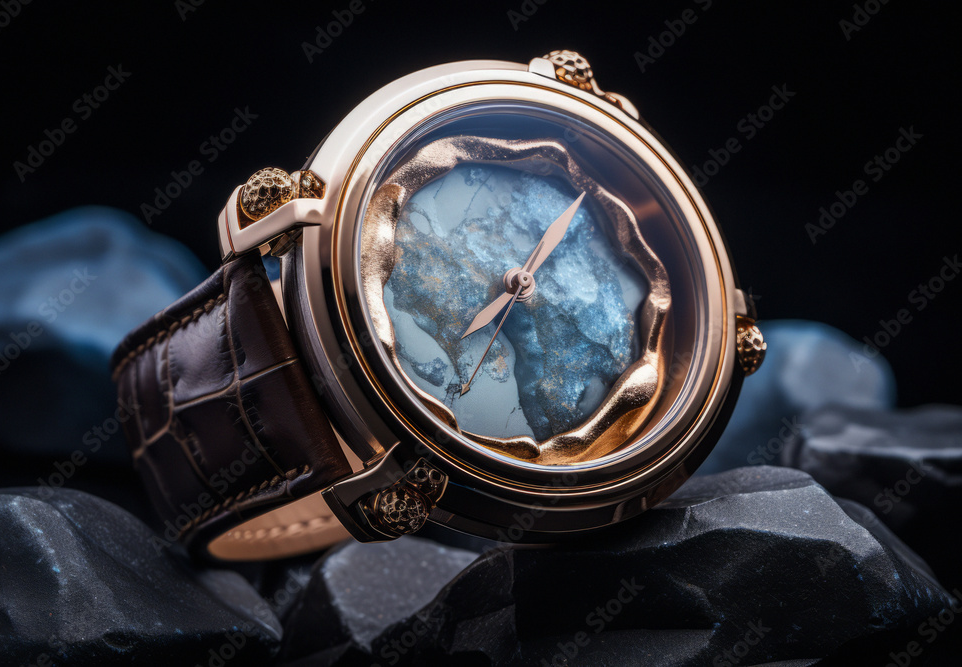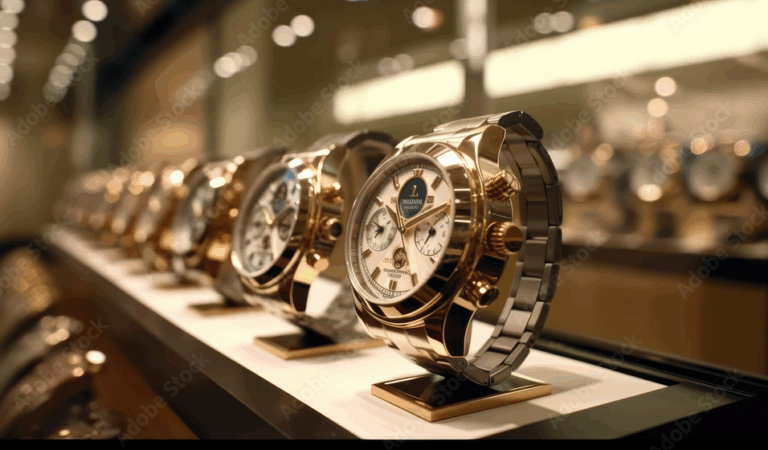
Men’s watches have evolved significantly, incorporating various technologies to cater to different needs and preferences. Here’s a breakdown of the main technology categories you’ll find in men’s watch lines:
1. Mechanical Watches:
- Technology: These are the traditional watch movements powered by a mainspring that is wound either manually or automatically (self-winding through the motion of the wearer’s wrist). The stored energy is then released through a series of gears and a regulating system (usually a balance wheel and hairspring) to keep time.
- Characteristics:
- Craftsmanship: Highly valued for their intricate movements and the skill of the watchmakers.
- No Battery: Powered purely by mechanical means.
- Smooth Second Hand Sweep: Often feature a smooth, sweeping motion of the second hand, unlike the ticking of quartz watches.
- Maintenance: Require regular servicing and lubrication to maintain accuracy.
- Accuracy: Can be less accurate than quartz movements, with variations of several seconds per day being common.
- Power Reserve: Have a limited power reserve (typically 40-72 hours, but some go much longer) and will stop if not wound or worn.
- Types:
- Manual-winding: Need to be wound by hand daily or every couple of days.
- Automatic (Self-winding): Wind themselves through the wearer’s wrist movements.
- Manual-winding: Need to be wound by hand daily or every couple of days.
- Appeal: Appreciated by enthusiasts for their heritage, complexity, and the connection to traditional watchmaking.
2. Quartz Watches:
- Technology: These watches use a battery to send an electrical current through a small quartz crystal. The quartz crystal vibrates at a very precise frequency, and these vibrations are used to measure time. A microchip then converts these vibrations into regular electrical pulses that drive the motor to move the hands.
- Characteristics:
- Accuracy: Significantly more accurate than mechanical watches, with deviations typically measured in seconds per month.
- Low Maintenance: Require minimal maintenance, mainly battery replacements every 1-3 years (or longer for some).
- Affordability: Generally more affordable than mechanical watches due to mass production of components.
- Ticking Second Hand: Usually feature a second hand that ticks in one-second intervals.
- Versatility: Can come in a wide range of styles, from dress watches to sports watches, due to the smaller size and versatility of the movement.
- Appeal: Favored for their accuracy, reliability, and ease of use.
3. Smartwatches:
- Technology: These are essentially wearable computers with timekeeping functions. They feature digital displays, powered by rechargeable batteries, and run operating systems that support various applications. They connect to smartphones (usually via Bluetooth) to offer a wide range of features beyond telling time.
- Characteristics:
- Digital Display: Offers customizable watch faces and information.
- Connectivity: Pair with smartphones for notifications (calls, texts, emails), app integration, and more.
- Sensors: Often include sensors like heart rate monitors, GPS, accelerometers, gyroscopes, and sometimes even more advanced sensors.
- Fitness Tracking: Typically excel at tracking activity levels, steps, distance, calories burned, sleep patterns, and heart rate.
- Apps: Can run various applications for fitness, navigation, communication, productivity, and entertainment.
- Rechargeable Battery: Require regular charging, typically daily or every few days, depending on usage.
- Customization: Highly customizable in terms of watch faces, straps, and app selection.
- Digital Display: Offers customizable watch faces and information.
- Appeal: Popular for their functionality, convenience, and integration with digital lifestyles.
4. Hybrid Smartwatches:
- Technology: These watches blend the aesthetics of traditional analog watches with some smart features. They typically have physical watch hands and a traditional dial but also incorporate hidden digital displays or sub-dials to show notifications and fitness tracking data. They connect to smartphones via Bluetooth.
- Characteristics:
- Analog Look: Maintain the classic appearance of a traditional watch.
- Basic Smart Features: Offer a curated set of smart features like notification alerts, activity tracking (steps, sleep), and sometimes basic fitness metrics.
- Longer Battery Life: Generally offer longer battery life compared to full-fledged smartwatches, often lasting for weeks or even months on a single charge.
- Discreet Technology: The smart features are often subtly integrated, preserving the traditional watch design.
- Limited App Ecosystem: Typically do not support third-party apps like full smartwatches.
- Analog Look: Maintain the classic appearance of a traditional watch.
- Appeal: Attract those who appreciate the look of a traditional watch but desire some basic smart functionality without the distractions or battery limitations of a full smartwatch.
5. Solar-Powered Watches:
- Technology: These watches use solar panels (often integrated into the watch face) to capture light energy, which is then converted into electrical energy and stored in a rechargeable battery. This eliminates the need for regular battery replacements.
- Characteristics:
- Eco-Friendly: Reduces battery waste.
- Long-Lasting Power: Once charged, they can often run for months even in darkness.
- Accuracy: Typically use quartz movements, ensuring good accuracy.
- Variety of Styles: Available in a wide range of styles, from casual to dress to sports watches.
- Eco-Friendly: Reduces battery waste.
- Appeal: Suits individuals who value convenience, environmental consciousness, and reliable timekeeping without the hassle of battery changes.
In summary, the men’s watch market offers a diverse range of technologies, each with its own set of advantages and appeals to different preferences:
- Mechanical: For the horological purist who appreciates tradition and craftsmanship.
- Quartz: For those who prioritize accuracy, low maintenance, and affordability.
- Smartwatches: For the tech-savvy individual who wants a multi-functional device on their wrist.
- Hybrid Smartwatches: For those seeking a blend of classic aesthetics and essential smart features.
- Solar-Powered: For the eco-conscious and convenience-focused wearer.
When choosing a men’s watch, considering the technology that powers it is crucial to aligning with individual needs and lifestyle.




